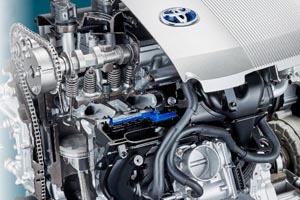Electric Vehicle Couse Outline
1. Overview of High Voltage Vehicle
1.1 Necessity of high voltage vehicle safety training
1.2 Introduction of high voltage vehicles
1.3 Practice/Quiz on high voltage vehicles
2.Danger of High Voltage
2.1 Effect of high voltage on human body
2.2 Main causes of high voltage electrical shock
2.3 Emergency measures upon high voltage electrical shock
2.4 Quiz on danger of high voltage
3.Safe Work with High Voltage Vehicles
3.1 PPE (Personal Protective Equipment)
3.2 Safe Work Produce
4.Basic of Electrification Vehicles
4.1 Differences between HEV, PHEV, EV
4.2 Technical overview of HEV, PHEV
4.3 Technical overview of EV
5.Electrification and hybridization concepts/HEV architectures and classifications
5.1 Plug-in Hybrid
5.2 Electric Vehicle with Range Extender
5.3 Parallel Hybrid
5.4 Series Hybrid
6.EV System Power Definition & Conversion
6.1 Power Conversion Components
6.2 Normal Charging System
6.3 Fast/Rapid Charging System
6.4 AC/DC connector
7.EV High Voltage Components
7.1 High voltage battery
7.2 High Voltage Junction Box
7.3 High voltage cable
7.4 AC to DC converter
7.5 Inverter
7.6 Electric A/C compressor
7.7 High voltage battery cooling system
8.EV Electrical and Electronics
8.1 Electric Power Control Unit
8.2 Single-phase and 3 phase motors
8.3 Induction AC motors
8.4 Traction Motor
8.5 Reducer
9.Practical activities:
9.1 Identifying EV system
9.2 Identifying EV high voltage components
9.3 Vehicle preparation before service
10.Practical: Safety Requirements Associated with EV
10.1 Safe working procedure on HEV
10.2 Using safety equipment
10.3 Identifying the HV cables
10.4 Disable power source
10.5 Locating HV and auxiliary battery
10.6 Checking HV battery voltage
10.7 Checking auxiliary battery voltage
11.Practical activities:
11.1 Identify EV high voltage system components
11.2 Identify HV Battery Packs
11.3 Measure high voltage battery
11.4 Diagnose HV battery health using scan tool
11.5 Isolation test on high voltage components
11.6 Safety measures before dismantling HV battery
11.7 Dismantle and replace HV battery
12.Practical activities
12.1 Identify traction Motor & reducer
12.2 Checking traction motor & reducer
12.3 Diagnose traction motor & reducer
13.Practical activities:
13.1 Diagnose and repair faults in the EV system
13.2 HV components cooling system inspection
13.3 Service HV battery and components cooling system
Interested in this course? Reach out to +6012-345 2723 for more details.
Course Features
- Lecture 0
- Quiz 0
- Duration 10 weeks
- Skill level All levels
- Language English
- Students 0
- Assessments Yes






